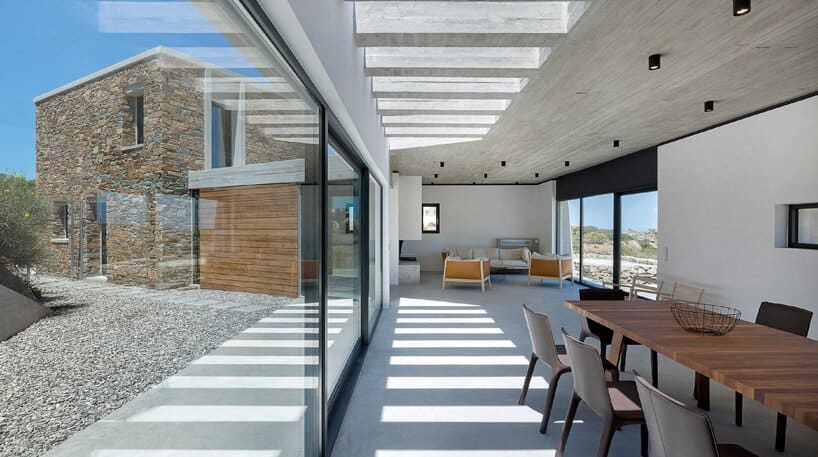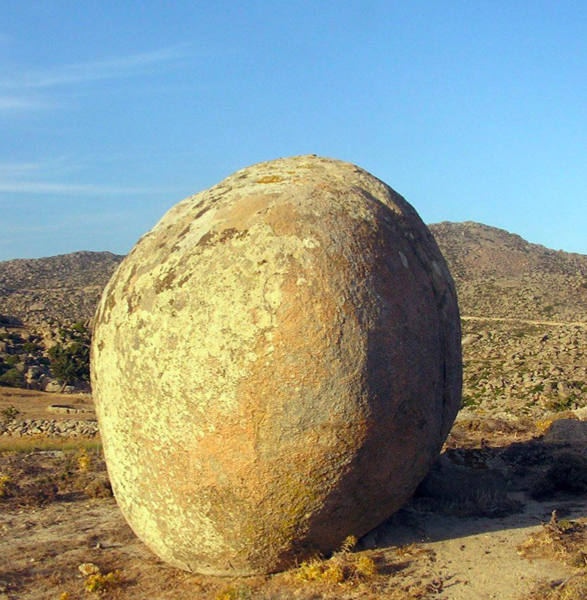The tiny village of Volax on the Cycladic Island of Tinos, Greece, rests upon an otherworldly, lunarlike landscape that looks as though it has been pelted with giant, spherical boulders.
It is from these large, almost perfectly rounded granite rocks peppering the plateau and surrounding slopes that Volax, or Volakas, as it is known in the village dialect, takes its name. It is the village with the 'volakous' (rocks).
A unique geological phenomenon, the giant, up to 10 metre high monoliths are scattered over a 22.6 square kilometre area, described by some as the largest boulder field in Europe.
According to Greek mythology, the boulders are eerie cannonballs, the last remnants of a ferocious battle between the Giants and the Titans.
However, in addition to giving birth to such legends, the strange geographic formations have also attracted the attention of geologists and scientists who have formulated several theories about how they came to rest on the island of Tinos about 20 million years ago.
One theory states that the rocks were the result of a volcanic eruption or that they plummeted down to earth from the heavens in a meteor shower.
Some believe that the volakous took shape in the sea which engulfed the area at one point, and once it retreated the rocks remained, owing their characteristic shape to water erosion.
Geologists say that the giant granite billiard balls formed as rock millions of years ago and were eroded into their round shape over millions of years by changes in temperature, humidity as well as friction caused by the wind.
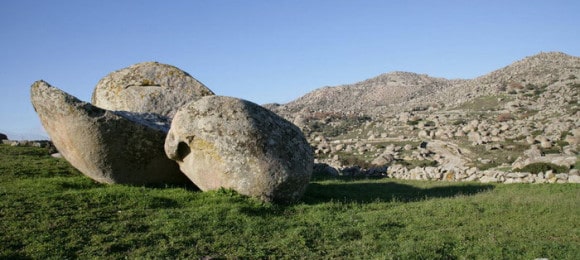
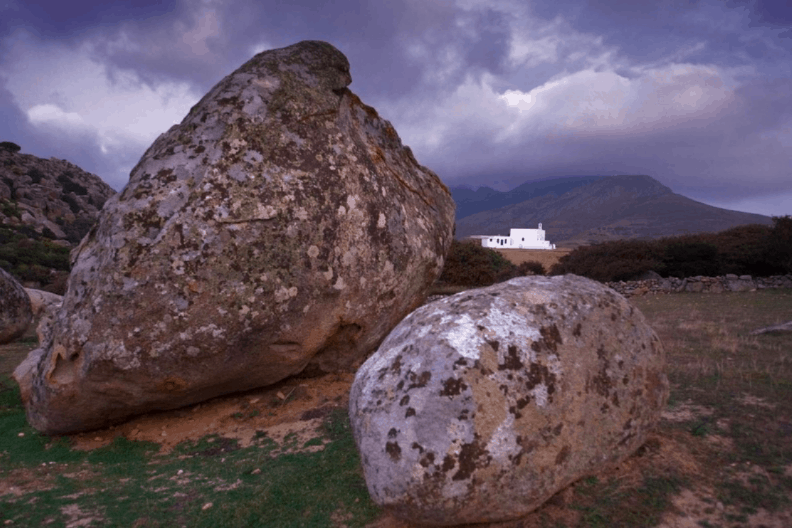
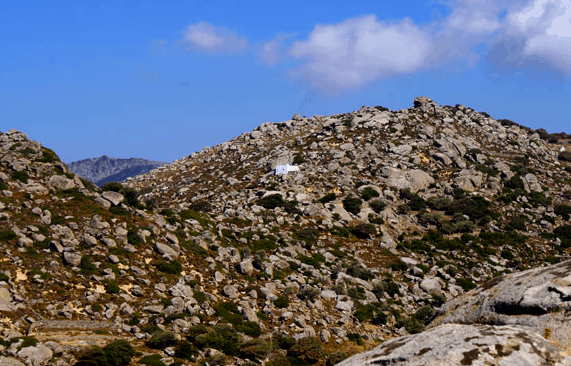
Photos: Instagram
Architecture without Architects in the Village of Volax
The unique extraterrestrial landscape creates a stunning sight that is not lost on tourists and rock climbers from around the world today, just as it was appreciated more than 2,000 years ago by the village's first inhabitants who, inspired by nature, made good use of the phenomenon, building their homes around, between and into the rocks.
"There is much to learn from architecture before it became an expert's art." Bernard Rudofsky.

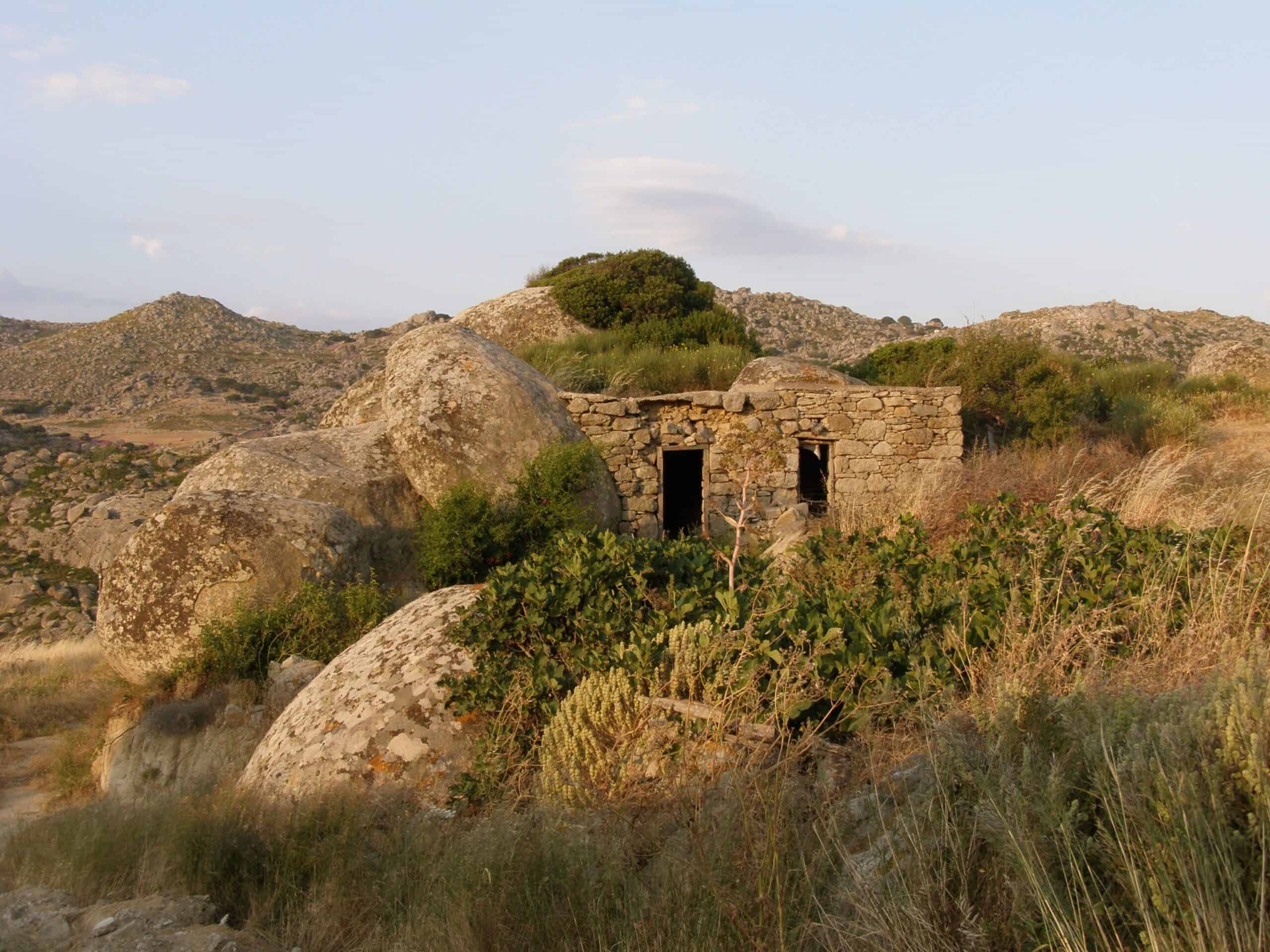


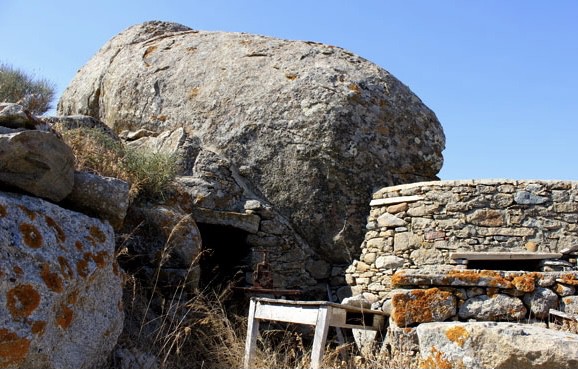
Photos: volax.gr and @tinos_habitart Instagram page
The fortified first homes of the medieval settlement, mostly crumbling and uninhabited today, were made at a time when fear of attack by pirates was prevalent.
Thus the villagers made use of the stones, carving out the surrounding rocks with small windows, blending in with the landscape to become almost invisible – an architectural case in point - demonstrating that the needs of the people, mixed with the peculiarities of the landscape, can combine to create a surreal result.
As time went on, in later centuries, the people of Volax continued to incorporate the large boulders into the village architecture, leaving them in place to form part of the foundation and wall structures of the buildings.


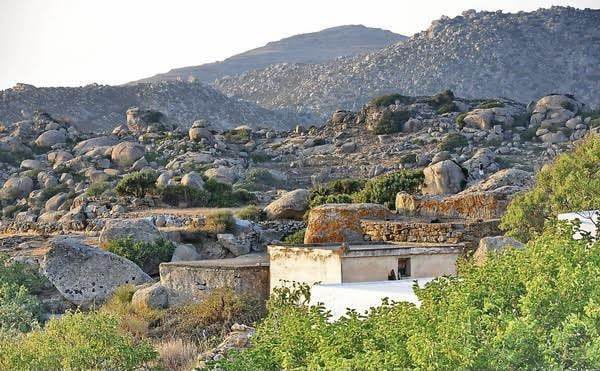
Photos: volax.gr
Nature's Architecture in the Modern Age
Fast forward to more current times, which have brought a general reawakening of the landscape as a precious heritage that architecture can and should enhance while protecting it to be passed on to future generations.
It is little wonder, therefore, that this romantic and unique setting of Volax has recently once again provided the inspiration for a residential home, designed by architect Aristides Dallas.
The owners, who happen to be a couple of rock climbers, selected this unique site because of its relation to the landscape as well as to the rounded 'works of art' made by nature itself, the rocks of Volax.
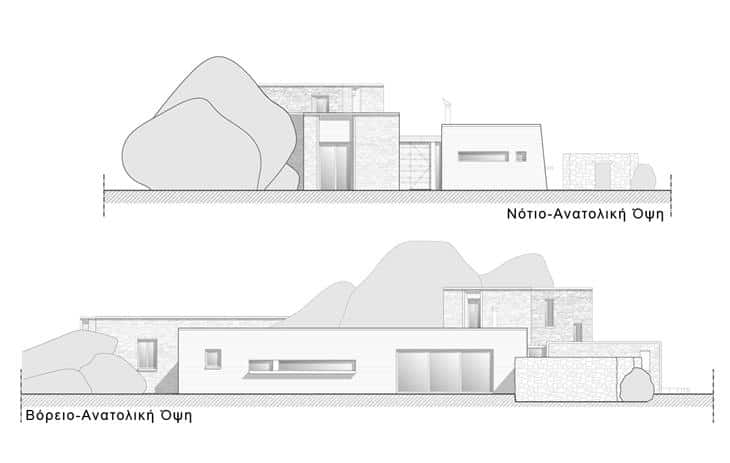
Photo: Aristedes Dallas Architecture Studios
"The house consists of 3 major ‘volumes’ arranged around the rocks, forming a patio in the centre," explains Aristedes Dallas architects.
"Around the central patio, the three buildings that house the main functions of the residence differ in height, dimensions, even in materials…
The design does not follow some organised manufacturing concept or a grid, but instead each volume is placed on the land in a different rotation axis, just as happened with the spherical volcanic rocks found in Volax," says the studio.
"Each part has been freely set in the space, in an almost anarchic way, as if it has fallen from the sky and it just stood there at random."
Precisely the impression that is given by the boulders of Volax.
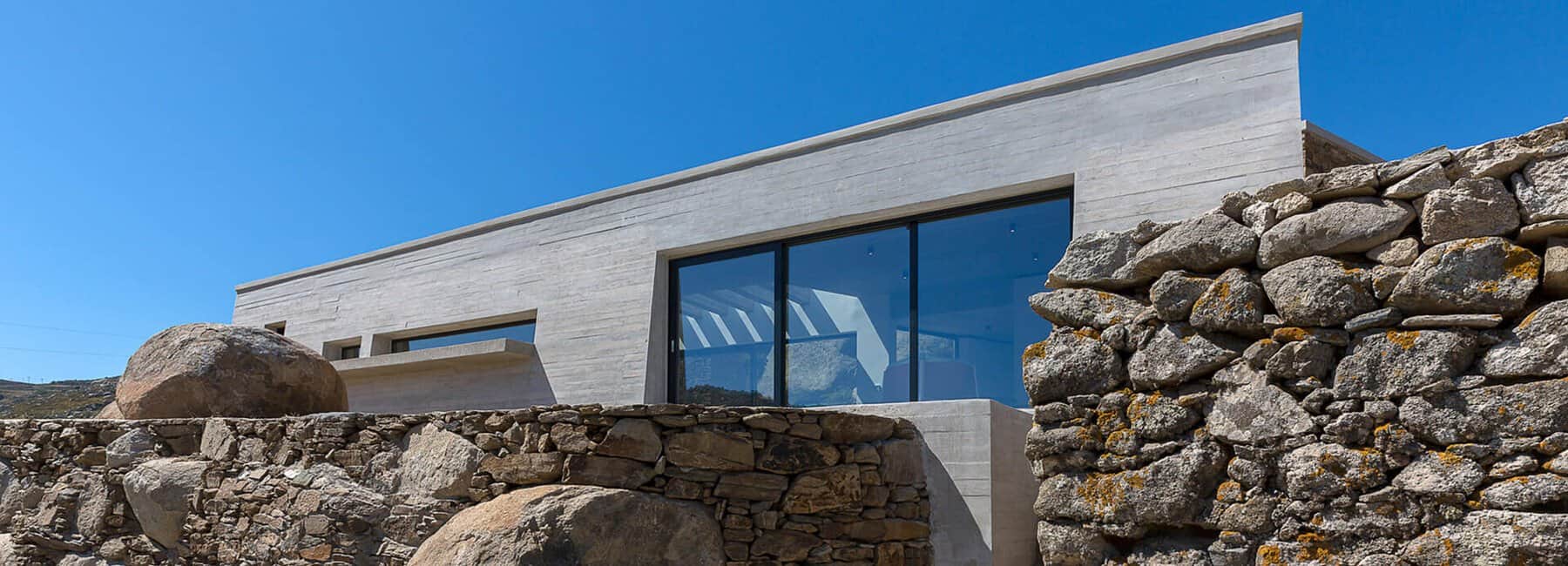
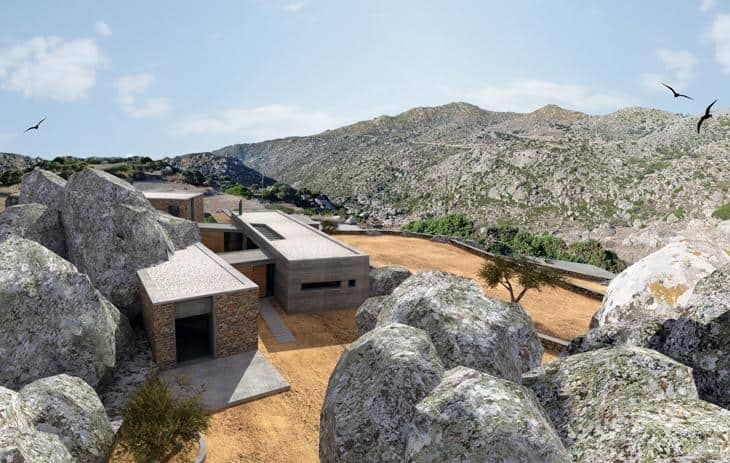
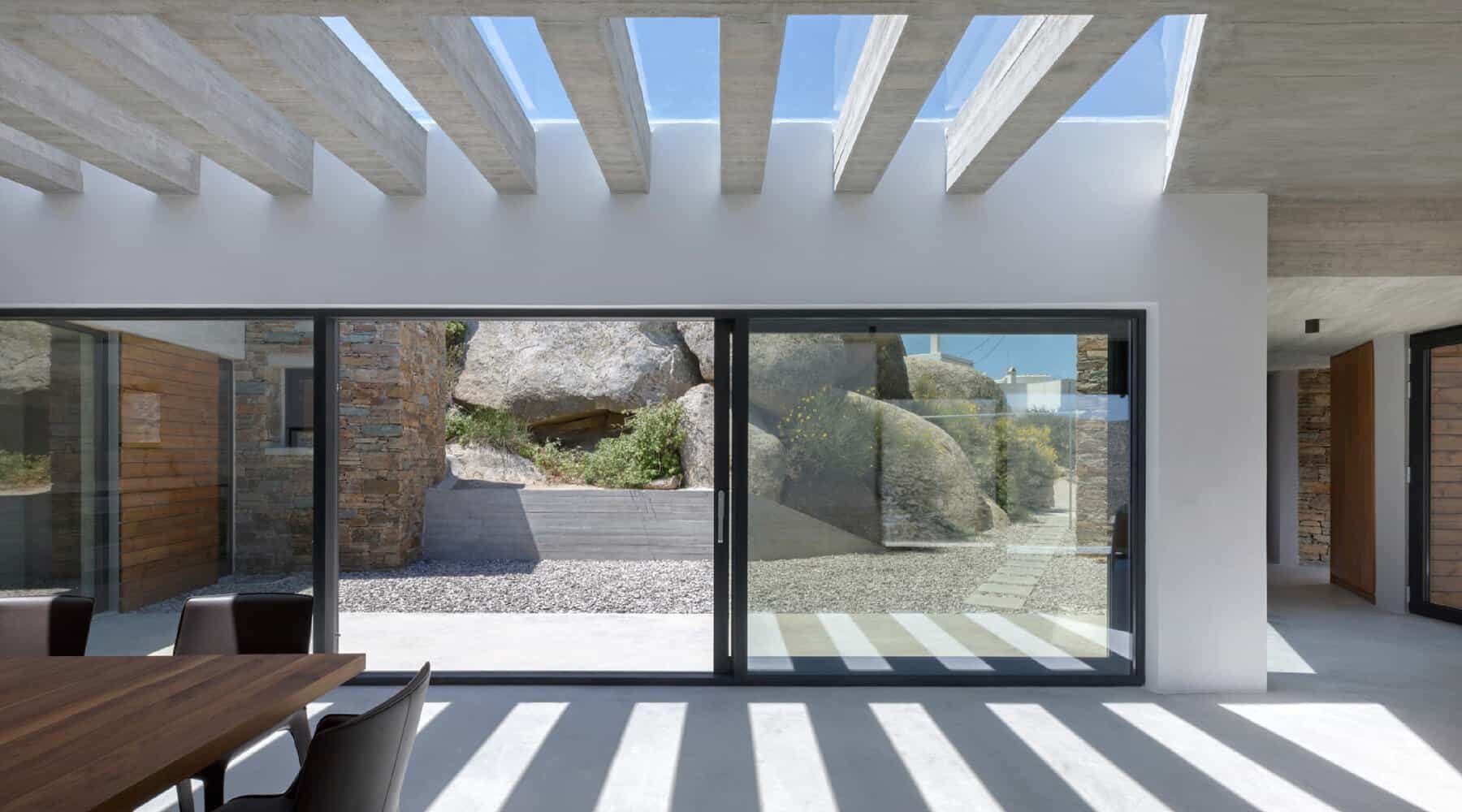
Photos: Aristedes Dallas Architecture Studios
Strongly influenced by the words of the famous Greek architect, Aris Constantinides, that not every plant grows in all places but specific ones (depending on climate, soil, conditions), Athenian born architect Dallas believes that in the same way, only specific buildings can stand out in specific locations.
Designing a residence that is not just in perfect harmony with the surrounding area but also celebrates it, Dallas creates an overall sensation of uniformity with the lunar landscape of Volax, just as the original inhabitants did thousands of years ago.
